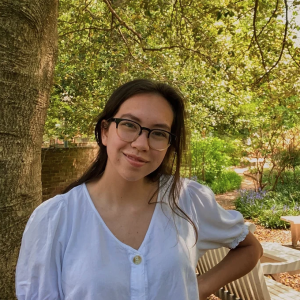Solutions journalism is a reporting approach that examines responses to problems in society and their effectiveness.
The reporting typically incorporates four main principles: a focus on responses to social issues; insight into those responses; concrete evidence to evaluate potential solutions; and analysis of responses’ shortcomings. Additionally, by helping newsrooms better address the information needs of their community, it can help them become more financially sustainable.
I spoke with three newsrooms to learn more about how they implement solutions journalism approaches: the Nigeria-based Prime Progress, Arizona Luminaria, a bilingual, non-profit newsroom covering southern Arizona, and The Trace, which reports on gun violence across the U.S.
Prime Progress
Solutions journalism is “the bread and butter” of the reporting carried out by Prime Progress, said Ogar Monday, the site’s deputy editor. The outlet uses a solutions approach to delve deeper into how people are responding to issues related to “social impact, repressive culture and accountability.”
One recent article of theirs analyzes the history and impact of a yam festival in Ugep, a town in southern Nigeria. Another describes the continued practice of labeling people as “witches” in Nigeria, and the organizations working to prevent it.
“In essence, what we are trying to do is not just focus on the problem. We are trying to be a part of the solution,” said Monday.
When Monday worked in more traditional newsrooms, the constant focus on negative news affected his mental health. News about the #EndSARS movement in Nigeria was especially depressing, he said.
Monday turned to solutions journalism, which he found to be “good for [his] soul” while still upholding journalistic best practices: “Just like all forms of journalism, solutions journalism is rigorous. You have to talk to sources, you have to find the facts that you have, you have to do every other thing that you do within the model.”
Arizona Luminaria
The bilingual outlet covering southern Arizona adopted a solutions journalism approach after surveying community members about their information wants and needs. Putting the community first has also helped generate funding to support the outlet.
“Before we built Luminaria, we went out and talked to people to ask them what their information needs were to try to kind of get an idea of who we were building this thing for and what they needed from us,” recalled Irene McKisson, a principal executive at Arizona Luminaria, and one of its co-founders. “We heard people, unprompted, tell us that they wanted to understand what solutions existed for problems in their community.”
Some of the outlet’s recent articles have addressed how a multi- lingual and cultural education program could help Latino students and teacher retention in Arizona, and how a worker center in Tucson has helped undocumented workers, with lessons that can be applied in other locations.
Solutions journalism can be challenging, stressed McKinnon. “It requires really rigorous reporting and a switch of mindset from any journalist who's never done it before because it's not how we're trained,” she said. “We have to respond to the information needs that they have and be really focused on solving their problems.”
Arizona Luminaria has many of its writers undergo trainings, often from the Solutions Journalism Network. McKinnon recommended the Solutions Journalism Network’s 101 training as a good place to start.
The Trace
The Trace takes a “holistic” view toward its coverage of gun violence, explained Sunny Sone, the outlet’s associate newsletter editor. The newsroom aims to help the public better understand the issue of gun violence, hold those in power accountable, and evaluate potential solutions.
Solutions journalism is ingrained in the site’s mission, as a result. Although all coverage touches on some aspect of gun violence, this focus doesn’t limit them as much as one may think. “Guns are such a part of American life at this point, and American culture, that it is actually an expansive topic and covers a lot of different things,” they said.
Across its coverage, The Trace tries to ensure that it reports critically on potential solutions to gun violence, recognizing that some will not work out as hoped. “One of the most important parts of solutions journalism is being critical,” noted Sone.
Readers have responded positively to the solutions approach The Trace has taken in its reporting. Its solutions journalism section, How We Fix This, includes articles that examine, for instance, how Baltimore is investing in creating safe public spaces for children, and how two sworn enemies from Kalamazoo, Michigan, founded an organization together that works with the community to prevent gun violence.”
The Trace has also launched a newsletter, The Trajectory, which focuses on potential solutions to gun violence. The newsletter received “a much bigger response” than expected: about half of the newsletter’s subscribers had never signed up for other products from The Trace.
“It became immediately clear that it was filling a space that people were looking for,” said Sone.


